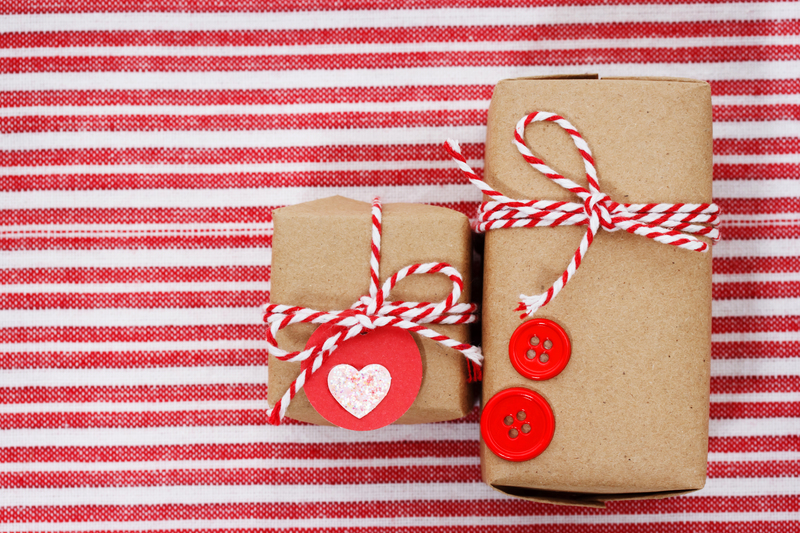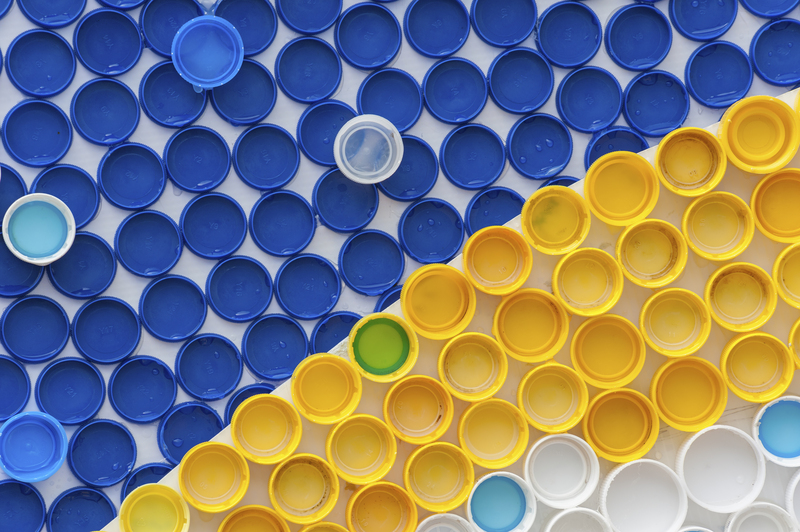Green Fashion: Revamping Old Clothes with Flair
In today's world, sustainability has become a central theme in various industries, and the fashion sector is no exception. Green fashion, or sustainable fashion, calls for eco-friendly practices at every step, from material sourcing to garment disposal. One of the most creative and impactful ways to embrace green fashion is by revamping old clothes with flair. This approach not only helps reduce environmental waste but also allows individuals to express their unique style through upcycled clothing. In this comprehensive guide, we'll explore the benefits of green fashion, provide innovative ideas to refresh your wardrobe, and discuss how to make the most of existing garments, all while staying trendy and environmentally responsible.

Why Green Fashion Matters
The Environmental Impact of the Fashion Industry
The fashion industry is notorious for being one of the world's largest polluters. From water-intensive cotton farming to chemical dyes and massive textile waste, the environmental footprint of clothing production and disposal is staggering. According to recent studies:
- 92 million tons of textile waste are produced globally each year.
- It takes approximately 2,700 liters of water to make one cotton t-shirt.
- The industry generates 10% of all humanity's carbon emissions.
By embracing green fashion principles such as revamping old clothes, we greatly reduce our personal fashion footprint and contribute to a more sustainable future.
Economic and Social Benefits of Upcycling Clothes
Beyond environmental advantages, revamping old clothing comes with economic and social perks. By maximizing the lifespan of garments, consumers save money and promote ethical consumption. Additionally, DIY fashion projects can be an enjoyable and bonding activity for friends and families, fostering creativity and a sense of accomplishment.
Creative Ways to Revamp Old Clothes with Flair
Upcycle vs. Recycle: Understanding the Difference
Many people use "upcycle" and "recycle" interchangeably, but there are distinct differences. Recycling breaks down materials to create new items, often with energy-intensive processes. Upcycling old clothes with flair means transforming worn garments into new, desirable items by adding value through style updates, without needing to shred or re-manufacture the fabric.
Simple DIY Techniques for Beginners
- Embroidery and Patchwork: Add personality by stitching colorful patterns or patches onto plain shirts, jeans, or jackets. Embroidery can be simple (like a tiny heart or your initials) or elaborate with floral themes and abstract designs.
- Fabric Paints and Dyes: Use eco-friendly fabric paints to create custom designs or tie-dye patterns on old clothes. This method is especially popular for transforming t-shirts and hoodies.
- Crop and Reshape: Turn stretched-out tees into chic crop tops, or refashion jeans into shorts. Raw edges and asymmetrical cuts are trending, making the process simpler and more creative.
- Accessory Additions: Sew on beads, lace, or sequins to add sparkle and dimension. Attach fringe sleeves or embellish collars to update a staple piece instantly.
- Layering and Mix-Matching: Mix different garments to create unique, layered outfits. Layer a slip dress over a turtleneck or combine skirts with pants for an edgy, runway-inspired look.
Advanced Upcycling Projects
- Quilted Jackets: Collate fabric scraps from various clothes to design a statement jacket. This not only utilizes leftover materials but also yields one-of-a-kind, cozy outerwear.
- Patching and Visible Mending: Embrace the visible mending trend - deliberately showcase your repairs with colorful patches and bold stitches. It transforms wear-and-tear into an intentional style statement.
- Garment Reconstruction: Combine two or more garments to make something new, like attaching a shirt top to a skirt bottom for a unique dress. Experiment with textures, colors, and silhouettes.
- Transforming Accessories: Repurpose old scarves into bohemian belts, bags, or headbands. Likewise, unused t-shirts can be turned into tote bags or even socks into wristbands.
Best Practices for Green Fashion and Wardrobe Revamping
Choosing the Right Clothes for Upcycling
Not every old garment is a perfect candidate for upcycling. When considering revamping old clothes:
- Check Fabric Quality: Fabrics that are not too worn or damaged yield better results and last longer after transformation.
- Natural Fabrics Favorability: Cotton, linen, wool, and silk are easier to work with and are more environmentally friendly than synthetics.
- Prioritize Classic Pieces: Timeless cuts (like button-ups, denim jeans, or plain t-shirts) offer versatile canvases for creativity.
Tools and Materials to Get Started
- Basic Sewing Kit (needles, thread, scissors, pins, measuring tape)
- Fabric Paints and Dyes (preferably non-toxic and eco-friendly)
- Patch Materials (scraps, lace, decorative fabric)
- Beads, Buttons, Sequins for embellishments
- Iron and Sewing Machine for more complex projects
Caring for Upcycled Clothes
Upcycled clothing may need gentle care to ensure longevity. Always follow recommended washing instructions, ideally washing garments inside-out and air drying when possible to preserve both the original fabric and your creative handiwork. Green fashion is not just about the making but also about prolonging your clothes' lives through proper maintenance.
Fashion Trends: Upcycling with Style
Influential Designers and Green Fashion
Many high-profile fashion designers and brands are embracing sustainable fashion in their collections. Brands like Stella McCartney, Eileen Fisher, and Patagonia are incorporating recycled and upcycled materials into their lines, making green fashion more mainstream. Street style influencers and celebrities are also driving this trend, showcasing thrifted and upcycled pieces on red carpets and social media.
Making a Statement: Personalized Green Fashion
One of the main appeals of revamping old clothes is the story each piece carries. By personalizing your wardrobe, you create a narrative that's both sustainable and stylish. Show off your values and creativity by proudly wearing homemade or upcycled outfits, supporting a more conscious approach to fashion.
Upcycling for All Ages and Skill Levels
Family-Friendly Green Fashion Projects
DIY upcycling projects are a wonderful activity for all ages. Children can try simple crafts, such as adding patches or drawing on fabric with safe markers. Teens may enjoy redesigning thrifted clothes with tie-dye or embellishments. Adults can explore more advanced techniques like sewing or garment reconstruction.
- Children: T-shirt painting, patchwork socks, button crafts
- Teens: Distressed denim, crop tops, fabric bead jewelry
- Adults: Quilted jackets, skirt-to-dress transformations, made-to-fit alterations
Community and Social Impact
Organizing clothing swap parties or upcycling workshops in your community encourages sustainable dressing and helps spread the green fashion movement. Many local charities and schools host repair and revamp events where you can learn and share ideas with others.
Tips to Make Old Clothes Look New and Trendy
- Accessorize Boldly: Statement jewelry, scarves, or belts can instantly update any look.
- Layer Creatively: Mixing textures, patterns, and length creates dynamic and modern outfits.
- Follow Current Color Trends: Painting or dyeing your garments to match the season's top shades gives them new life.
- Add Personalized Details: Custom embroidery, monograms, or applique make clothes distinctly yours.
- Embrace Visible Repairs: Instead of hiding patches or stitches, use vibrant threads and fabrics to turn mending into a fashion statement.
Benefits of Revamping Old Clothes
- Environmental Conservation: Upcycling reduces textile waste and conserves resources that would otherwise go into new garment production.
- Cost Savings: Updating old clothing is far more affordable than constantly buying new pieces.
- Unique Style: DIY fashion ensures your wardrobe is unlike anyone else's and displays your personal flair.
- Emotional Satisfaction: The process of creation and sustenance of a wardrobe you've curated is highly rewarding.

How to Get Started With Green Fashion
- Audit Your Wardrobe: Identify clothes that are rarely worn, out of style, or in need of repair.
- Seek Inspiration: Browse social media, fashion blogs, and YouTube for upcycling ideas matching your interests and skill level.
- Start Small: Begin with minor alterations or embellishments before moving to full-scale reconstructions.
- Share Your Creations: Post your upcycled clothing on Instagram or Pinterest to inspire others and join a supportive green fashion community.
- Keep Learning: Take workshops and follow upcycling experts to expand your skills and stay on top of new sustainable fashion trends.
Online Communities and Resources
Numerous blogs, YouTube channels, and online courses focus on upcycling and sustainable fashion. Some top resources include:
- The Upcycle Fashion Blog: A source of in-depth tutorials and inspiration.
- YouTube Creators: Creators like Coolirpa and Annika Victoria offer beginner-to-advanced DIY tutorials.
- Pinterest: A visual resource for step-by-step guides and trendspotting.
Conclusion: Embrace the Green Fashion Revolution
Adopting green fashion by revamping old clothes with flair is an empowering and eco-friendly way to stay stylish. By extending the life of garments through upcycling, we help combat the environmental challenges posed by fast fashion and inspire a movement toward conscious consumption. Whether you're a seasoned DIY enthusiast or a beginner looking to refresh your style sustainably, the opportunities are endless. _Let your creativity shine, minimize waste, and make a positive impact on the planet--one revamped outfit at a time!_
Taking part in the green fashion revolution not only upgrades your wardrobe but also fosters a deeper connection with your clothing and the planet. Start small, experiment boldly, and encourage others to join in on this sustainable journey. The future of fashion is green--and it starts with you.